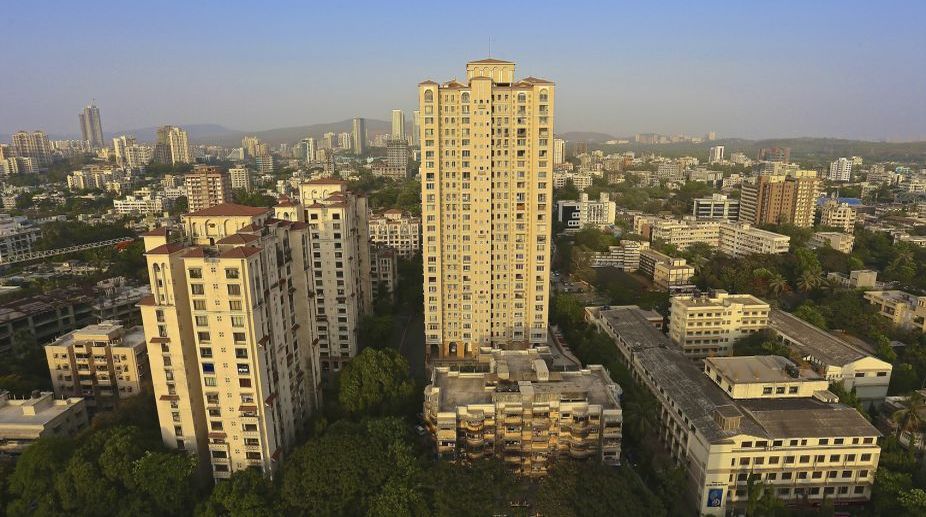Domestic demand showing signs of recovery, US tariff hikes risk to GDP growth: CRISIL
India's domestic demand is showing signs of recovery, supported by several positive developments, according to a recent report by Crisil.

(Photo: Getty Image)
With a slew of reforms and push from the government, the poor's second-cousin of real estate (affordable housing) is emerging as the preferred segment for housing finance institutions and developers alike, say industry stakeholders and experts.
"Affordable housing is now attracting the interest of more developers who had previously shunned it because of its down-market image. Today (Monday), it has become a respectable segment and with the government's determined push… it now plays a very important role in the housing finance sector," Anuj Puri, Residential Chairman of property consulting firm Jones Lang LaSalle, told IANS.
Advertisement
LIC Housing Finance said it has identified affordable housing as the focus area for the current year and has devised strategies and action plans for greater emphasis on the sector.
Advertisement
Shankara Vaddadi, CEO and Founder of online peer-to-peer lending platform I-lend, told IANS, "With quick turnaround times, this sector is ripe for a new breed of housing finance companies to enter with much lower thresholds and quicker movement on disbursal. This will lead to competition.. we can see a new breed of non-banking financial companies (NBFCs) getting into the sector and making quick inroads."
According to a report by domestic ratings agency Crisil, affordable homes are altering mortgage market dynamics. It estimates that the segment was worth around Rs.1.6 lakh crore as on 31 March, 2017-accounting for over 25 per cent of all housing loans.
Affordable housing has the potential to be clean and quick, leading to lower operational and marketing costs and helping in creating a new category within the realty space.
Amol Shimpi, Associate Dean and Director, School of Real Estate, RICS School of Built Environment, Amity University, told IANS, "However, it must be noted that the business of affordable housing can prove tricky for the players if enough caution is not exercised. For example, bringing down the construction cost without compromising on quality may be easier said than done."
While the segment is on a growth curve, the goal of providing affordable housing to all will be achieved by bridging the gap that currently exists between access to capital and execution capability.
The other aspect of affordable housing will be the increasing use of newer material for building houses and construction techniques which might revolutionise the sector.
Brotin Banerjee, MD and CEO, Tata Housing Development Company, said, "The growth and sustenance of this segment is as dependent on a dedicated public-private partnership (PPP) model as it is on the successful creation of infrastructure in the earmarked regions.
"The government's focus on affordable housing is likely to spur private participation further. The segment can serve as a revenue stream in the wake of slower sales in other categories," Banerjee told IANS.
Traditionally, the onus of supplying affordable housing has been with public sector entities. However, the entire ecosystem of regulators, developers or banks are coming together to push the government's objective of "Housing for All".
Not only the public sector but also private sector banks have reduced the home loan rates to boost the sector. State Bank of India, LIC Housing Finance and Housing Development Finance Corporation, among others, recently reduced home loan interest rates by up to 30 basis points.
Sudhir Pai, CEO, Magicbricks said that the company was already witnessing a spike of 40 per cent in searches and 30 per cent in owner listings since February.
"In addition to the lower rates for home loans, the Credit Linked Subsidy Scheme (CLSS) released by the National Housing Bank (NHB) has also helped. This reduces the effective home loan rate for the borrower," Pai said.
Under the CLSS, those in a salary bracket of up to Rs.6 lakh a year can avail a credit subsidy of 6.5 per cent on housing loans. In the Union Budget, a 4 per cent and 3 per cent interest subsidy was announced for those annually earning up to Rs.12 lakh and Rs.18 lakh, respectively, on home loans of up to Rs.12 lakh.
Additionally, the rollout of the Goods and Services Tax (GST) is not expected to lead to an increase in the cost to the buyers.
Many construction materials are in the 18 and 28 per cent GST slabs. For example, steel and steel products are at 18 per cent and cement is at 28 per cent. Currently, the total tax burden is calculated at 30 to 31 per cent, which is 2-3 percent more than the proposed GST rate for cement. Also, as an input tax credit is available, the overall tax incidence should be neutralised.
"Thus, the basic construction cost may come down a little, but as the input tax credit is limited to 12 per cent, there may not be much saving in the high-end specification construction," Surabhi Arora, Senior Associate Director, Research, Colliers International India, said.
"The question for the buyer will remain whether the developer will pass the saving in the form of price correction or not, despite the anti-profiteering clause because it may be difficult to monitor in real time," Arora said.
Moreover, infrastructure status to the affordable housing segment and Real Estate Regulation and Development Act, 2016 (RERA) are considered crucial moves for its growth.
Advertisement
India's domestic demand is showing signs of recovery, supported by several positive developments, according to a recent report by Crisil.
According to a report by real estate consultancy firm Anarock, the unsold inventory in the segment fell to 1.13 lakh units at the end of Q1 2025.
The CRISIL report also states that power generation is estimated to have increased around 5.4 per cent year-on-year to 136 BUs this November, more than meeting the monthly demand.
Advertisement
